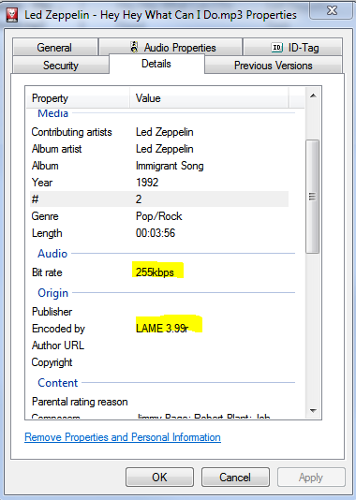GRUMPYOLDGUY
1000+ Head-Fier
- Joined
- Aug 19, 2016
- Posts
- 1,146
- Likes
- 341
1. Even the most dynamic of commercial recordings virtually never exceed a 60dB dynamic range, that's the equivalent of 10bits. So with a 16bit distribution format the last 6 or so LSBs are just noise or digital silence. A 24bit release therefore just has another 8bits worth of noise (or digital silence). Providing those additional 8 LSBs of random noise (or digital silence) can be removed transparently, which has been easily achievable for well over a decade, how can loosing them in any way be described as a compromise? And as for loosing a band of inaudible ultrasonic frequencies is concerned, how is that a compromise? On the contrary, it's actually a potential fidelity improvement as it removes the likelihood of any downstream IMD compromising the sound quality! And finally, a 192kHz sampling rate is itself already compromise compared to lower sample rates. 192k is not higher quality because it's more data, it's lower quality!
2. Of course 24/192 is spectrally different, there's another 8bits of noise plus a far larger band of inaudible, ultrasonic freqs in there. And yes, you do increase the digital noise floor; from roughly 14bits below the recording's noise floor, to only 6bits below it! And sure, it's maybe possible to foul up a downsampling/dithering process to the point that it's not audibly transparent but that would take fairly severe incompetence and exceptionally poor quality tools, for which there's no excuse as transparency was achievable many years ago even with free tools!
The cheaper version (to buy) is commonly the more expensive version to actually make! Typically, we record and mix the highest quality we can, given the constraints of budget and time. That mix is then tweaked during mastering to produce a high quality master. To produce a lower quality master then requires additional steps to be taken, costing more time and therefore money. It's usually not feasible or often even possible to take a low quality mix (or master) and turn it into a high quality master but the other way around is of course far easier.
Also, we have to be careful about what we mean when we say "an inferior version". A version which would sound "truly inferior" when listening with good equipment in our critical listening environment may actually be "truly superior" in a different situation. For example, I'm currently mastering an album for a talented guitarist, which was recorded at 24/96, even though spectral analysis shows there's virtually nothing above about 20kHz; an acoustic guitar produces very little above 20k to start with, it looks like standard studio mics were used which roll-off at about 20k anyway and the dynamic range of an acoustic guitar is relatively small. As part of my mastering I'm applying fairly heavy compression because the artist will distribute on YouTube and wants the recordings to sound good on a variety of playback equipment including laptops, tablets and even mobile phones. Although this compression compromises the SQ of the recording when listening with decent equipment/environments, the artist feels this compromise to be relatively minor compared to the fact that the recording would be un-listenable in those other situations which are important to him. So why record, mix and master in a (so called) HD format to start with, especially as there's virtually nothing there which could make even a theoretical difference, let alone an audible one? It's simply as a future proofing measure. The artist may enter a relationship with a label or his circumstances may change in some other way which may require a HD release version. A task which will now be trivial but would probably have required him to spend weeks completely re-recording the whole album if he hadn't recorded and mixed it at 24/96 to start with. This HD version would sound significantly better to the critical listener than the current version, purely due to the fact that I could significantly dial down the amount of compression. If it were up to me and if/when such a HD version were required, I would release this HD version at 16/44.1 because there would be absolutely no audible difference between this version being distributed in a HD format or at 16/44.1. Unfortunately, the world of music marketing doesn't currently work that way and it's virtually certain a HD version would have to be distributed in a HD format.
Lastly, while analogies with visual images can often be very handy, they can also quite often be entirely misleading. SD and HD video in this case is an example of the latter. Even the higher resolution limits of HD video is well within the ability of the human eye and additionally the move from SD to HD involved a fundamental change to the replay technology (bigger plasma or LED screens rather than CRT), all this added up to a very obvious and noticeable difference between SD and HD. With audio, even the resolution limits of (so called) SD audio is beyond the ability of the human ear and additionally, there has been no fundamental change in the replay technology (speakers are essentially the same tech as before even SD digital audio).
G
I get a headache everytime I read one of your posts.
Not only are you missing the point of my statement entirely, you're clearly just arguing for argument's sake. Enjoy.







